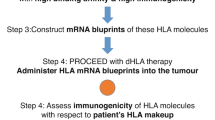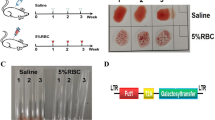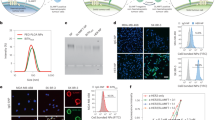Abstract
ONE possible approach for increasing the effectiveness of anti-tumour drugs would be to find methods of altering their distribution in the body to increase their local concentration at the tumour cell sites. Ghose et al. have reported the suppression of Ehrlich ascites carcinoma in mice after administration of chlorambucil allegedly bound to anti-tumour antibodies1. This immunochemical approach to cancer has great potential, but the production of highly specific antibodies suitable for clinical use may prove to be a major practical problem.
This is a preview of subscription content, access via your institution
Access options
Subscribe to this journal
Receive 51 print issues and online access
$199.00 per year
only $3.90 per issue
Buy this article
- Purchase on Springer Link
- Instant access to full article PDF
Prices may be subject to local taxes which are calculated during checkout
Similar content being viewed by others
References
Ghose, T., Path, M. R. C., and Nigam, S. P., Cancer, 29, 1398–1400 (1972).
Lin, H., Bruce, W. R., and Walcroft, M. J., Cancer Chemother. Rep., 59, 319–326 (1975).
Hurwitz, E., Levy, R., Maron, R., Wilchek, M., Arnon, R., and Sela, M., Cancer Res., 35, 1175–1181 (1975).
Kind, L. S., and Petersen, W. A., Science, 160, 312–313 (1968).
Author information
Authors and Affiliations
Rights and permissions
About this article
Cite this article
KITAO, T., HATTORI, K. Concanavalin A as a carrier of daunomycin. Nature 265, 81–82 (1977). https://doi.org/10.1038/265081a0
Received:
Accepted:
Issue Date:
DOI: https://doi.org/10.1038/265081a0
This article is cited by
-
Biodegradable polymeric drug delivery systems
Archives of Pharmacal Research (1986)
-
Rosette formation of tumor cells with concanavalin A treated erythrocytes
Experientia (1980)
Comments
By submitting a comment you agree to abide by our Terms and Community Guidelines. If you find something abusive or that does not comply with our terms or guidelines please flag it as inappropriate.



